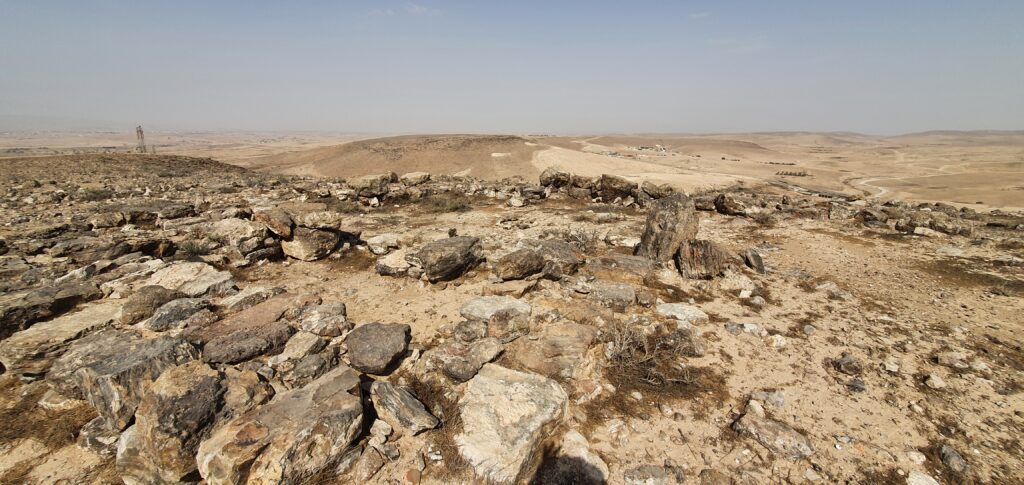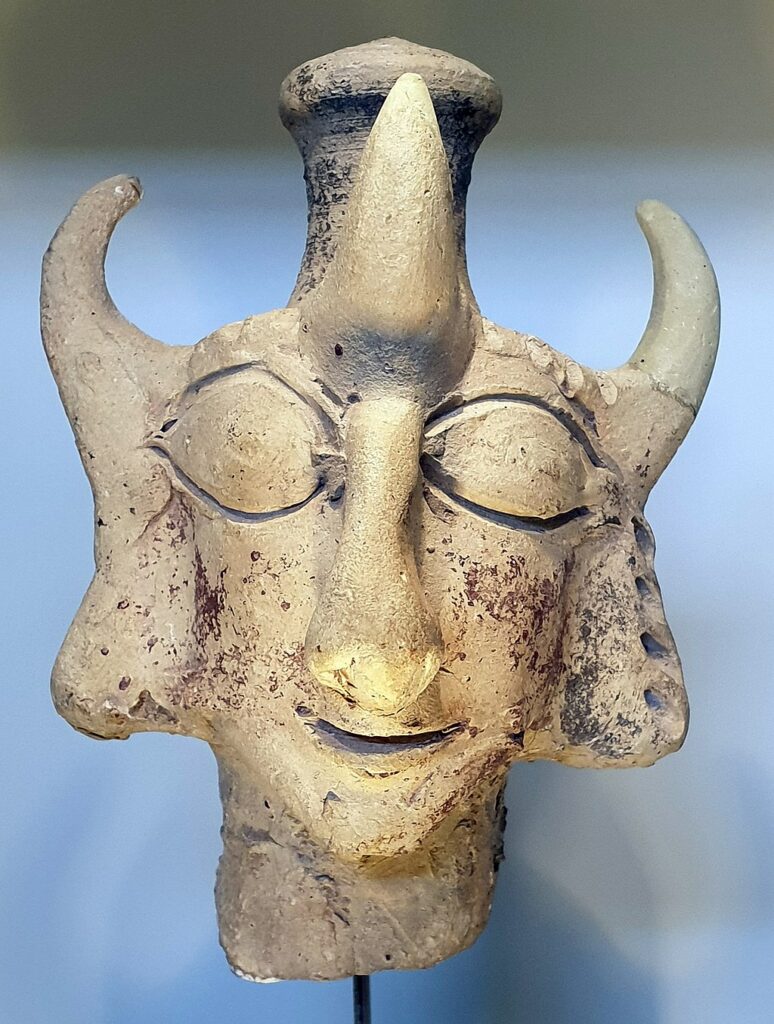Location
Horvat Qitmit is located in the Arad Valley in the Negev desert, on a flat, elongated hill 527 meters above sea level. The site offers extensive views of the Beersheba and Arad valleys and is near Iron Age settlements like the Arad fortress, Tel Malhata, and Tel ‘Ira. he site is known for the remains of the temple, which includes a rectangular structure (5×10 meters) with three rooms, built with large stones and paved with plaster


Identification and Exploration
Discovered in early 1979 by a survey team led by I. Beit-Arieh, Horvat Qitmit consists of two complexes of rectangular buildings and two circular enclosures. It was identified as the location of an Edomite shrine from the late 7th and early 6th centuries BCE.
History
The site and its findings date to the 7th-6th centuries BC, that is, the end of the Iron Age by its function as an Edomite shrine within the Judean kingdom at the end of the First Temple period, indicating Edomite influence or territorial acquisition in the eastern Negev around the time of the First Temple’s destruction.
Biblical Context
While not directly mentioned in the Bible, the site’s significance lies in its reflection of the geopolitical dynamics of the region during the Iron Age, particularly the interaction between the Edomites and the Judean kingdom.
Excavations
Excavations were conducted from 1984 to 1986 by the Institute of Archaeology at Tel Aviv University, directed by I. Beit-Arieh. The entire area was excavated, revealing the shrine’s structure and numerous artifacts.
Findings
- Complex A: The main cultic area with a rectangular building, a platform, a basin, an altar, and enclosures. The building had three rooms with benches that may have served as podiums for statues or altars. A large quantity of sherds, animal bones, and figurines were found.
- Complex B: A rectangular enclosure with a room, columns, an open courtyard, and a circular chamber. It contained sherds, faunal remains, inscriptions, and a majjeba (sacred stone).
- Pottery: Two main groups were identified – types characteristic of Judea in the 7th and early 6th centuries BCE, and Edomite pottery.
- Cult Objects and Iconography: Numerous fragments of pedestals, anthropomorphic and zoomorphic clay figurines, and various reliefs were found, reflecting local Iron Age iconography with influences from coastal cultures and contemporary Edomite sites.
The three horns of this figurine



The three horns of this figurine identify it as the head of a deity. The lack of a beard suggests a goddess, while traces of paint indicate that the face was originally painted red and the hair and the handle were painted black. The facial features and hair were modelled around a hollow object and the features are slightly asymmetrical. The nose is prominent and the lips are incised in a small smile.
The style of the pottery and finds has led to the site’s interpretation as an Edomite shrine, located near a number of small Judean settlements that in part guarded a road running from Edom through the Beersheba valley into Judah. A number of the figurines, including this one, were not made in Edom but were made in the Edomite style from materials local to the region, as indicated by analysis of their chemical compositions. Whether the site was primarily used by Edomites, Judeans, or was open to anyone is not clear. The large number of figurines and cultic finds at Horvat Qitmit is in stark contrast to the small amount found at the Judean shrine at Arad, but the reasons for this contrast are not entirely clear.
Sources
Stern, Ephraim-New Encyclopedia of Archaeological Excavations in the Holy Land 4-Israel Exploration Society (1993)

